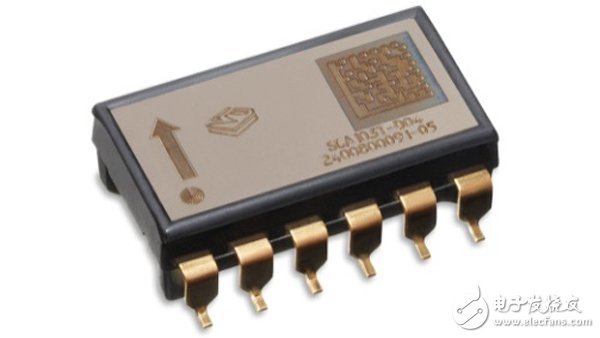Design engineers often need to choose between different types of accelerometers in the development of heavy equipment. For example, in heavy machinery such as cranes, tractors, wood cutting machines, and construction engineering, designers need to use acceleration sensors to measure the pitch and roll angle of the equipment during operation.
In most applications, they typically make choices based on the sensor's primary characteristics, such as structure, resonant frequency, reliability, stability, bandwidth, power consumption, and cost.
For capacitive and thermal MEMS sensors, the biggest difference between the two technologies is their different sensing technologies.

A typical dual-axis thermal MEMS accelerometer is based on a single-chip integration technology. The chips of the sensor and control circuit are integrated in a hermetic package. The sensor includes a cavity created by silicon etching and a set of heaters and temperature measuring cells placed in the cavity.
Unlike capacitive devices, thermal sensors measure acceleration by monitoring the movement of the heater mass within the package cavity. In the absence of acceleration, the hot air mass will be symmetrically distributed above the heater. Under the action of acceleration, the hot air mass moves in the direction of acceleration. Since the device does not contain structures that can be bent or displaceable, very high device reliability can be provided.
Partial disadvantages of capacitive MEMS accelerometers
Capacitive MEMS accelerometers use a structure of a displaceable cantilever. For low acceleration devices used for tilt measurement, the inherent bandwidth of the cantilever structure is typically greater than 5 kHz and the resonant frequency is around 2 kHz. When the energy of the vibration is too large or the frequency of the vibration is close to the resonant frequency of the cantilever structure, the output signal of the capacitive acceleration sensor may be distorted or resonated.
In most cases, distortion or resonance signals can cause large zero drift (especially the Z-axis), making it impossible for the sensor to properly restore the true signal in high-intensity vibration environments. Zero drift in high-intensity vibration environments is an inherent disadvantage of capacitive accelerometers, and additional techniques are often required to isolate or mitigate the effects of vibration.
Cargo Water Ingress Alarm Device
cargo water ingress alarm device
cargo water ingress alarm device,cargo water ingress alarm device price,cargo water ingress alarm device product
Taizhou Jiabo Instrument Technology Co., Ltd. , https://www.taizhoujbcbyq.com